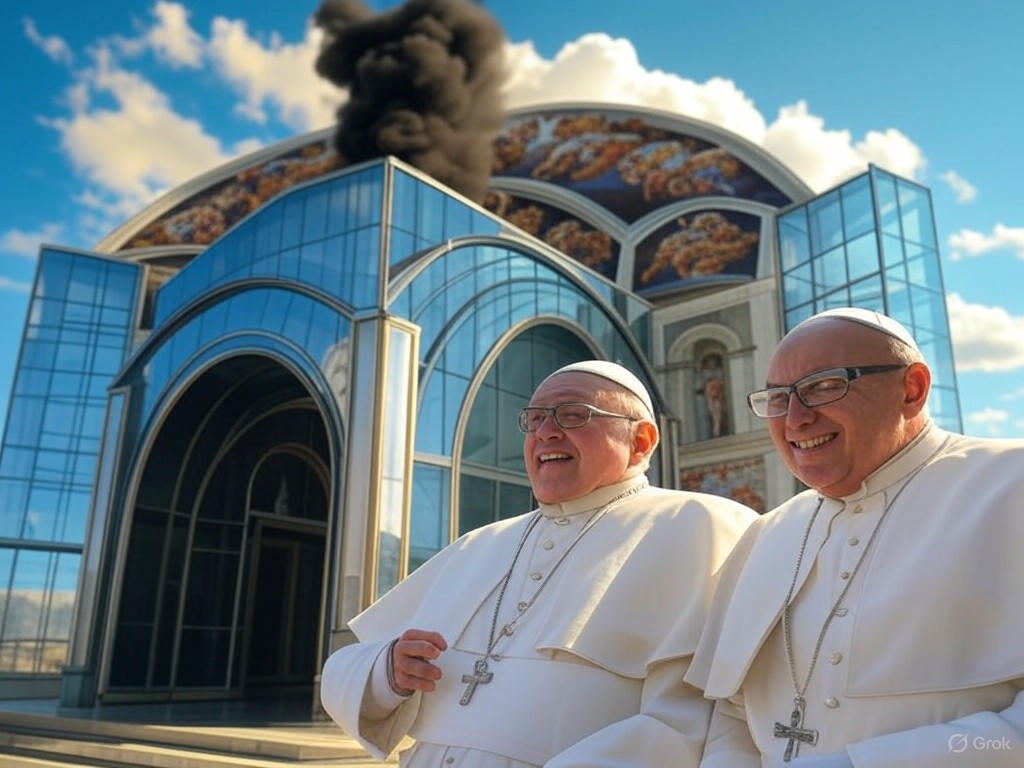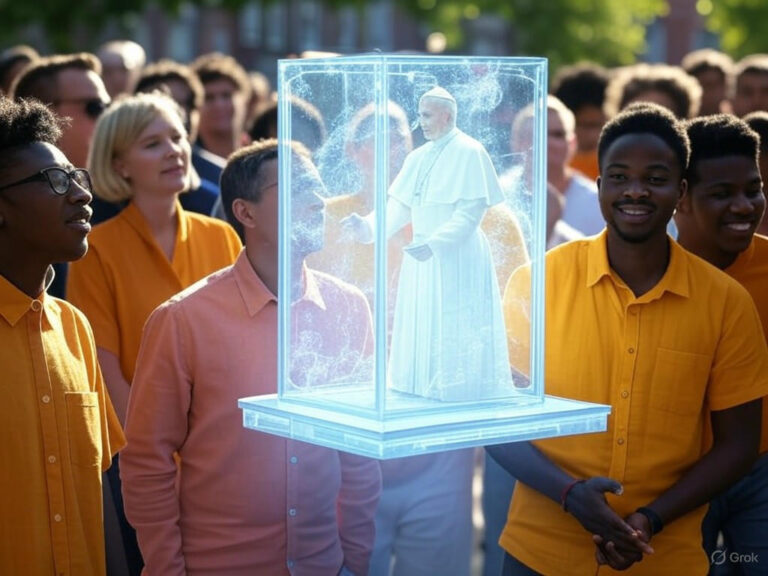
Black Smoke Signals Cardinals’ Failure in First Papal Election Vote
The Timeless Drama of Black Smoke in Papal Elections
Imagine the world holding its breath as plumes of black smoke rise from the Sistine Chapel’s chimney—it’s a scene straight out of centuries of tradition, signaling that the Cardinals haven’t yet found their next leader. Black smoke, a stark visual cue in the papal conclave, reminds us of the high stakes involved in choosing the head of the Roman Catholic Church. This ancient ritual, steeped in history and faith, draws millions to their screens, waiting for that pivotal moment when consensus might finally emerge.
What Black Smoke Really Means During the Conclave
Black smoke isn’t just smoke; it’s a message of indecision, indicating that no candidate has clinched the required two-thirds majority among the voting Cardinals. In the heart of Vatican City, this signal cuts through the suspense, telling the faithful that the process continues. Have you ever paused to think about how such a simple visual can carry so much weight in one of the world’s most secretive elections?
Drawing from historical practices, black smoke emerges after ballots are burned, mixed with chemicals to create that unmistakable dark puff. It’s a tradition that dates back to the Middle Ages, ensuring transparency in an otherwise cloaked event.
The Intricacies Behind the Black Smoke Signal
- After each voting round, the ballots are fed into a special stove where they’re incinerated with damp straw or other additives to produce black smoke, symbolizing an inconclusive outcome.
- This method, refined over time, prevents any leaks about who’s leading, keeping the process pure and focused on divine guidance rather than politics.
- Contrast this with white smoke, which signals success, and you’ll see how black smoke serves as a built-in check on haste in such a profound decision.
No Quick Victory: Black Smoke on the First Day of Voting
The first glimpse of black smoke this conclave appeared right on schedule, around 9:00 p.m. local time, underscoring the challenges of uniting over 130 Cardinals from diverse backgrounds. With representatives from 71 countries, achieving unanimity isn’t easy—it’s like herding global perspectives into one shared vision. This black smoke moment highlights the realistic expectations; after all, who expects a decision on day one?
Think about it: in past elections, that initial black smoke has often set the stage for deeper dialogues, allowing Cardinals to test the waters and build alliances. It’s not failure, but a necessary step in a process designed for thorough reflection.
Traditions and Tactics of the First Black Smoke Ballot
- The opening vote acts as a kind of early gauge, helping Cardinals sense the room’s energy without committing fully—call it a strategic “feel-out” round.
- From there, informal chats and prayers ramp up, turning potential rivals into collaborators as they aim for that elusive majority.
- Historically, this phase has led to some of the most fascinating papal stories, like unexpected dark horses rising through the ranks.
Secrets and Rituals Inside the Conclave
Step inside the Sistine Chapel, and you’re entering a world of utmost secrecy, where even a whisper could break oaths and lead to excommunication. The Cardinals march in procession, doors seal shut, and the real work begins amid Michelangelo’s masterpieces. Black smoke, in this context, becomes a rare window to the outside world, hinting at the intense deliberations unfolding.
It’s fascinating how this blend of prayer and politics creates an atmosphere that’s both spiritual and strategic. If you’ve ever wondered what it’s like to be part of such a historic event, imagine the weight of choosing a leader for over a billion people.
How the Voting Leads to Black Smoke
- Each Cardinal casts a secret ballot, writing a name on paper, folding it carefully, and depositing it into an ornate urn to maintain anonymity.
- Three officials tally the votes; if no one hits the two-thirds mark, those ballots get burned to produce black smoke, a signal that’s as old as the ritual itself.
- They might go through up to four rounds a day, each one building tension until that smoke tells the tale.
Why Black Smoke Reveals the Challenges of Papal Elections
Picking a pope isn’t a quick vote—it’s a marathon of soul-searching, debate, and compromise, especially with a College of Cardinals as diverse as today’s. Black smoke emerging early often points to ideological divides, from progressive views to conservative stances, making unity a real test. This complexity ensures the Church’s leader is truly equipped for global challenges.
For instance, in the 2013 conclave, multiple rounds of black smoke preceded Pope Francis’s election, showing how patience pays off. It’s a reminder that great decisions demand time and reflection.
Key Stages of the Papal Election Process
| Stage | Description |
|---|---|
| Entry and Sealing | Cardinals enter the Sistine Chapel, take secrecy oaths, and the space is locked down to begin isolated voting. |
| Balloting Sessions | Multiple secret votes occur daily, each potentially ending in black smoke if no majority is reached. |
| Smoke Signals | Black smoke means no pope yet; white smoke heralds success and celebration. |
| Acceptance and Announcement | The elected pope accepts and chooses a name, followed by the iconic “Habemus Papam” declaration. |
The Deeper Impact of Black Smoke Signals
Black smoke isn’t just a letdown; it’s a profound symbol of the Church’s commitment to careful selection, ensuring the new pope is the right fit for modern times. Globally, it sparks conversations among Catholics and non-Catholics alike, uniting people in curiosity and anticipation. What does this say about the balance of tradition and progress in today’s world?
Reactions pour in from every corner—social media buzzes, news outlets analyze, and families gather to speculate. It’s a moment that bridges history with the present, reminding us of the enduring power of faith.
Worldwide Anticipation After Black Smoke
As black smoke clears, the wait intensifies, with millions tuning in for updates. This global theater of hope and patience often leads to unexpected alliances and insights. For example, in recent conclaves, early black smoke has paved the way for reformers to gain traction, shaping the Church’s future direction.
What’s Next After the First Black Smoke?
With the initial vote behind them, Cardinals will dive into more rounds, leaning on prayer and discussion to bridge gaps. Black smoke today means more opportunities tomorrow, potentially leading to a swift resolution or a longer wait. If you’re following along, keep an eye on those smoke signals—they’re the storytellers of this saga.
- Voting picks up again soon, with up to four ballots per day until a winner emerges.
- Once elected, the new pope steps onto the balcony, marking a fresh era for the Church.
The Lasting Significance of Choosing the Next Pope
Every papal election, especially when marked by black smoke early on, sets the stage for transformative leadership. The next pope could steer the Church toward environmental advocacy, social justice, or interfaith dialogue—issues that resonate deeply in our interconnected world. It’s a chance to reflect on how one person’s vision can influence billions.
Picture a hypothetical scenario: a pope emerging from rounds of black smoke, bringing a fresh perspective that addresses youth engagement or global crises. That’s the potential at stake here.
Wrapping Up: The Ongoing Saga of Black Smoke
In the end, black smoke is a call for patience, a nod to the gravity of the decision at hand. As the Cardinals continue their work, the world watches, waits, and wonders what’s next. What are your thoughts on this ancient process—does it still hold relevance today?
If you’re intrigued by Church history or just love a good story of human drama, share your insights in the comments below, or explore more on Vatican traditions through our related posts. Let’s keep the conversation going and stay tuned for that eventual white smoke moment.
References
- CBS8. “Black and White Smoke in the Conclave.” Source Link.
- National Catholic Reporter. “Black Smoke Signals No Pope Elected in Conclave’s First Voting Round.” Source Link.
- CBS News. “How the Papal Conclave Chose the New Pope.” Source Link.
- USCCB. “How a New Pope is Chosen.” Source Link.
- OAPEN Library. “Vatican and Papal Elections.” Source Link.
- Georgetown University. “Conclave History.” Source Link.







